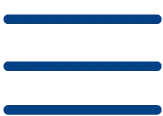One of the biggest challenges is to make sure that your messages reach your recipients’ inboxes instead of getting trapped in the dreaded spam folder. When an email is classified as spam, not only do you lose the opportunity to reach your audience, but you also damage the reputation of your domain and email address. In this article, we will show you how to prevent your emails from ending up in the spam folder, focusing on verifying the contacts in your email lists.
Email List Cleaning and Validation
The first step to ensure that your emails are not marked as spam is to ensure that your contact lists are clean and up to date. Outdated or inactive e-mail addresses can increase the likelihood that your messages will be filtered as spam. Use email validation tools to remove invalid addresses and verify the authenticity of your contacts.
Other emails that impair deliverability are spam trap mails, also known as spam traps, are email addresses created or identified by email service providers and anti-spam organizations for the purpose of catching spammers. There are two main types of spam trap mails:
-
Pure Spam Traps: These are email addresses that have never been used by a person and are created specifically with the intention of attracting spammers. When a sender sends mail to one of these addresses, it is considered a clear sign of spamming practices.
-
Recycled Spam Traps: These email addresses were used in the past but have been inactive for a significant period of time. Email service providers reactivate them as spam traps to identify senders who send to out-of-date lists and contacts who have not given their consent.
To detect spam trap mails and make sure that an email does not arrive as spam, with a professional email validation tool, follow these steps:
-
Upload your mailing list: Import the list of emails you wish to validate into the validation tool.
-
Run validation: Starts the e-mail validation process. The tool will verify the authenticity of the addresses and look for possible spam traps in the list.
-
Identify suspicious addresses: The professional email validation tool will provide you with results that indicate addresses that could be spam traps or suspicious. These addresses should be treated with caution.
-
Act accordingly: After validation, you should consider deleting or investigating addresses identified as spam traps. You can choose not to send mail to these addresses or try to verify if they are genuine. It is also important to perform a periodic cleaning of your lists to avoid the inclusion of spam traps in future email campaigns.
Remember that spam trap detection is an essential part of maintaining a solid sender reputation and ensuring that your emails reach your recipients’ inboxes. Using professional email validation tools is a proactive approach to avoid falling into these traps and maintain the effectiveness of your email marketing campaigns.
Obtain Consent and Comply with Regulations
It is essential to obtain the consent of your recipients before sending them e-mails. Make sure you comply with privacy regulations, such as the General Data Protection Regulation (GDPR) in the European Union and the CAN-SPAM Act in the United States. Respect for privacy and transparency in your emailing practices will help keep your messages out of the spam folder.
Take care of the Content of your Emails
The content of your emails plays a crucial role in determining whether they will end up in the spam folder or in the inbox. Avoid using high-risk phrases or words that spam filters detect, such as “free”, “offer”, “easy money” or “make money”. Make sure your emails are relevant, informative and useful to your recipients.
Uses Domain Authentication and SPF/DKIM/DMARC
Domain authentication and the configuration of SPF (Sender Policy Framework), DKIM (DomainKeys Identified Mail) and DMARC (Domain-based Message Authentication, Reporting, and Conformance) records are best practices that can help you prevent your emails from being considered suspicious. These measures ensure that your messages are authentic and come from legitimate sources and prevent an email from arriving as spam.
Performs Shipping Tests and Constant Monitoring
Before sending a large email campaign, test send to your own trusted email addresses to verify that your messages are not flagged as spam. In addition, set up a constant monitoring system to monitor deliverability metrics and the open rate of your emails.
Conclusion
Preventing your emails from ending up in the spam folder is essential to the success of your email marketing campaigns. Verifying and cleaning your contact lists, complying with regulations, creating quality content and implementing authentication measures are key steps in this process. By following these guidelines, you will improve the likelihood that your emails will reach your recipients’ inboxes and maximize the effectiveness of your email marketing efforts.
If you need a professional tool to verify emails. You can register in our portal and evaluate our solution for free.



